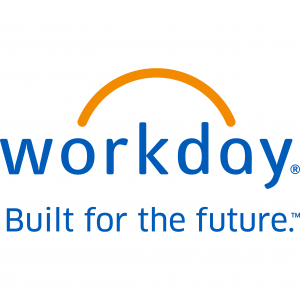This is an interview with Dan Wesley, North American Chief Technology Officer at Workday, from our recent guide, State and Local Technology: What You Need to Know.
Cloud computing continues to be a key priority for state and local agencies. Many organizations began by pursuing infrastructure-as-a-service and platform-as-a-service models but are now looking for more opportunities to reap the cost-savings, flexibility and scalability of cloud environments. Specifically, many agencies are considering moving enterprise resource planning (ERP) systems to cloud, since those systems are often the backbone of organizational processes and efficiencies.
“The expense of managing an on-premise ERP system, including the technical requirements to ensure performance and security while continually evolving the application to meet agency needs, is a major reason organizations are moving these to the cloud,” said Workday’s North American Chief Technology Officer Dan Wesley. He also explained that many legacy ERPs have reached their natural end of life usefulness after being extensively customized to meet niche needs. Workday provides modern, cloud-based and software-centric ERPs for all levels of government.
Before agencies dive into the next phase of their cloud journey, Wesley suggested that agencies rethink the way they have traditionally approached ERP implementation and procurement. He offered several suggestions to improve cloud-based ERP deployments.
Wesley first recommended reconsidering the role of the ERP within a government enterprise. While ERPs commonly manage financials, human resources, and other operational requirements, modern ERPs can offer greater value in new fields. With a cloud-based solution, agencies can use their ERPs to provide collaboration tools, extend service to mobile devices or even fuel robust analytics on operational data.
“What’s often neglected is the usability aspect of ERP systems. Look at things outside of just traditional transactions, including end user and agency use cases, as well as new access points,” Wesley encouraged. “That’s what we live with on a day-to-day basis. What we encounter in many private sector online services should be expected of our ERP systems, as well.”
The scalability and adaptability of cloud technology allows agencies to make the most of their ERPs, but those benefits can only be achieved if the right system is acquired to provide that flexibility. Wesley warned that one-size-fits-all approaches in which standard security and contracting language is applied to every aspect of an acquisition, can impede successful evaluation and selection of ERPs.
For many agencies, a broad and templated contract will prevent them from acquiring the best solution to meet their specific needs. Overly strict security requirements may prevent necessary information-sharing or block best-of-breed solutions from consideration.
Instead, Wesley advised taking a holistic approach that balances risk with other considerations. “You have to understand the full scope of your agency’s requirements and apply those to your contract,” he said. “You have to ensure security but you also have to ensure user acceptability and enable things like embedded analytics and reporting.”
Wesley advised writing requests for proposal in a way that allows evaluation of industry standards for security as alternatives to industry-specific standards like FedRAMP certification. He also suggested working directly with procurement officers to review contracting terms and conditions that have not been modernized for cloud procurement.
Finally, Wesley recommended considering platforms that are highly configurable to meet needs as they evolve. With a platform like Workday, agencies can take an incremental approach to building out their ERP’s functionality. Users can configure the tool over time, expanding new functionality to new environments in the cloud.
For agencies to pursue this incremental approach and deploy the right cloud-based ERP, they have to think outside of traditional procurement paradigms. In many instances, a trusted third-party vendor can help agencies understand their unique requirements and how to implement them in procurement. ”
“We work in partnership with the agency,” Wesley said of Workday’s approach. “It’s understanding the agency’s needs and the evolution of those needs from a system support and configuration perspective. It’s about learning what makes them unique and then offering a configurable platform to allow them to express the uniqueness in the service itself.”
Workday offers a number of highly configurable applications within their ERP system but, more importantly, they help agencies determine which of those capabilities is truly appropriate for their needs. “We want every user to embrace your agency – the change within your agency and the potential within your agency,” he concluded. “Then, our software will flux and configure with you.”
For agencies moving to the cloud, the next step is migrating business-central systems like enterprise resource planning to new environments. But success will only be achieved if government selects the right partners to move forward.
To read more about the latest news in public sector innovation, read our latest guide, State and Local Technology: What You Need to Know.






Leave a Reply
You must be logged in to post a comment.